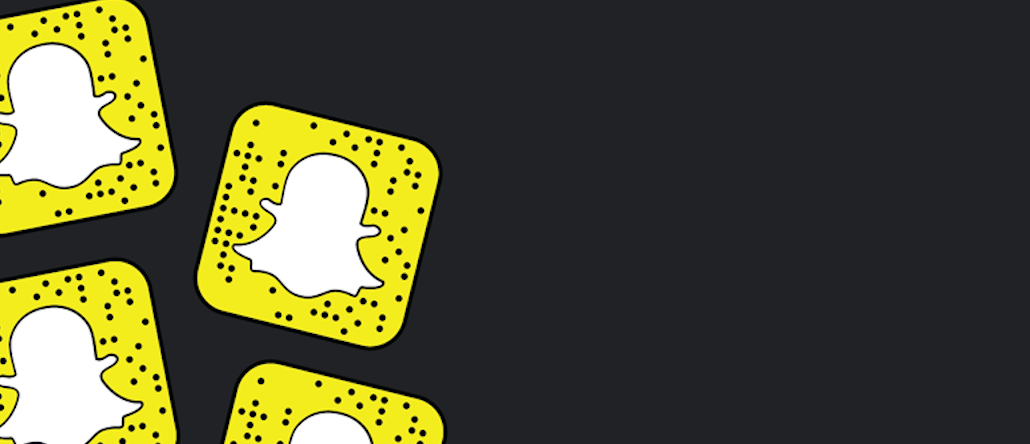Save 50% on a 3-month Digiday+ membership. Ends Dec 5.

While Facebook plays down the embarrassment of miscalculating average video watch time on its platform, some of its competitors are taking to Advertising Week to tout their advantages over the social behemoth — without naming Facebook specifically, of course.
Snapchat, for instance, talked of the importance of audio in video advertising. In his first visit to Advertising Week, Snapchat’s chief strategy officer, Imran Khan, said sound matters. To demonstrate that, he played two versions of a 10-second trailer for the 2015 horror film “The Visit,” one with the audio off and the other with it on.
“In my humble opinion, a video ad that plays without sound is not a video,” Khan said. “I like to call it a moving banner.”
Khan’s comments come three months after Snapchat boasted that more than two-thirds of videos on Snapchat, including user- and publisher-made content as well as ads, are watched with the sound on. Some marketers have been impressed. During Khan’s presentation, Doug Neil, evp of digital marketing for Universal Pictures, said he likes that Snapchat keeps the sound on, “which is not the case with some of the other social platforms.”
Not to be left out, Twitter COO Adam Bain also made a distinction around how advertising on the company’s fledgling live video product means “sound-on video, full-screen video and interstitial video ads between content.”
Without naming names, both are taking a clear shot against Facebook, which has grown to more than 8 billion video views per day largely off people watching — or scrolling by — silent videos within their news feeds. Multiple publishers have previously said that roughly 85 percent of their (non-live) videos on Facebook are watched without the sound. (Facebook said last month that it’s in the early stages of testing videos with the sound on from the beginning.)
Twitter also noted another way its live-video offering differs from Facebook (and resembles TV): the average minute audience metric. Instead of only providing total views or unique viewers for its live streams — which to date include two Thursday night NFL games and one presidential debate — Twitter also releases the average number of viewers for any 60 seconds of its broadcast. For instance, the first NFL game averaged 243,000 viewers per minute while the second game averaged 327,000 viewers.
Ad position: web_incontent_pos1
“We’re trying to open [our platform] and show as much as we possibly can,” said Bain. It’s one of the reasons why Twitter breaks out the average audience per minute, “which no one else does. They just give the audience number without any transparency behind it.”
If that sounds like another shot against Facebook, it is. Since admitting last week that average video watch time on its platform was inflated by up to 80 percent, Facebook has taken a lot of heat from marketers and publishers. Many have called for more independent measurement and verification of the data reported by the “walled gardens” of social media. Facing the same questions over accountability, Snapchat and Twitter boasted of their various partnerships with third-party measurement vendors like Moat and Integral Ad Science. (Twitter was the one of the first social networks to implement Moat, said Bain.)
But while some marketers are appreciative of Snapchat’s and Twitter’s video efforts, most don’t feel it’s enough of a distinction to take dollars away from Facebook.
“Not all ads require audio. It’s a differentiation, but it doesn’t make me like Facebook less,” said Charlie Fiordalis, chief digital officer of ad buying firm Media Storm. “The creative that I create for Facebook just needs to have text queues, because it’s still video and has the impact of video.”
Ultimately, as all things do, it comes down to scale. Snapchat has 60 million daily users in the U.S. and Canada — the first time Snapchat has broken out domestic daily users within its global daily user base of 150 million. That’s on par with Instagram, which is just one facet of Facebook’s overall advertising business. Twitter, meanwhile, has 315 million monthly users. Instagram has 500 million.
Ad position: web_incontent_pos2
“Scale is the major factor,” said Fiordalis. “That’s why Google and Facebook get 85 percent of [digital] ad spend.”
More in Media

Digiday+ Research Subscription Index 2025: Subscription strategies from Bloomberg, The New York Times, Vox and others
Digiday’s third annual Subscription Index examines and measures publishers’ subscription strategies to identify common approaches and key tactics among Bloomberg, The New York Times, Vox and others.

From lawsuits to lobbying: How publishers are fighting AI
We may be closing out 2025, but publishers aren’t retreating from the battle of AI search — some are escalating it, and they expect the fight to stretch deep into 2026.

Media Briefing: Publishers turn to vertical video to compete with creators and grow ad revenue in 2026
Publishers add vertical video feeds to their sites to boost engagement, attract video ad spend and compete with news creators.
Ad position: web_bfu
